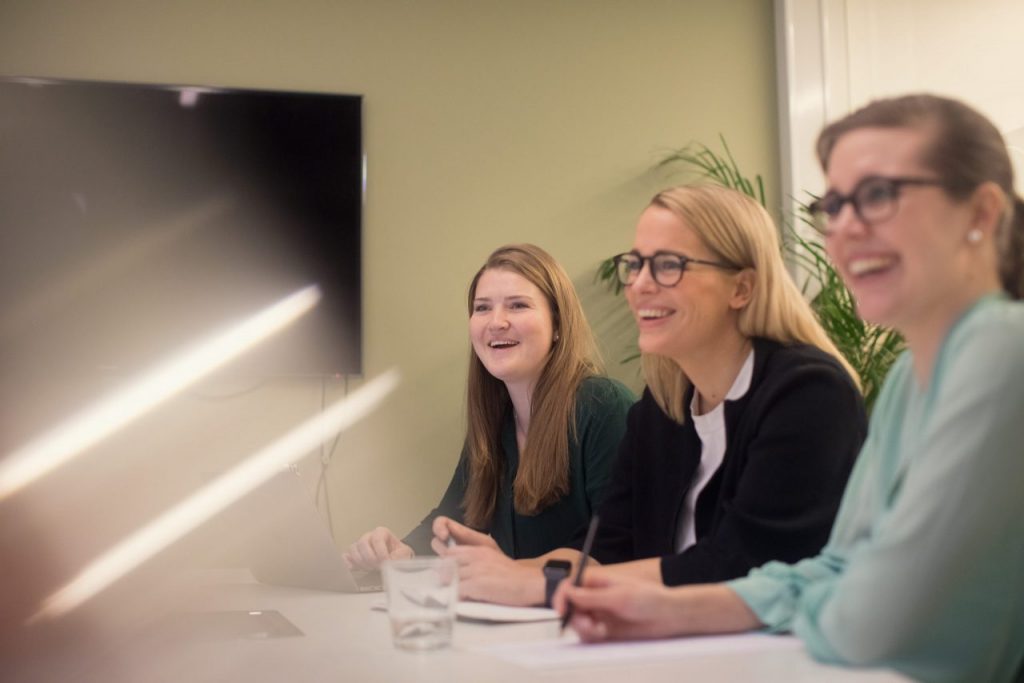Qualitative and quantitative research – what is it, and which should be used when?
To create relevant content, the material should be tested with your target audience - preferably several times during the development process. Whichever research method you choose shapes the kind of insight you will be able to glean. So what is qualitative and quantitative research?
So what is qualitative research?
Qualitative methods are research methods that explore and create deeper insights into the actions, attitudes, stated needs and underlying motives of a specific target group. In other words, qualitative methods can give you in-depth understanding and nuanced knowledge of a given problem or target group. The feedback you receive will be especially useful for development and improvement processes.
At Task, we like to use qualitative methodology for exploratory issues. Especially if we’re curious about people’s attitudes, thoughts and ideas, or if we are concerned with finding out how people act and relate to specific issues. It’s often through a combination of multiple methods, known as method triangulation, that we arrive at the most insightful result. Here you can read about three qualitative methods:
Focus groups
Focus groups are cost-effective and are particularly suitable for capturing dialogue and uncovering group dynamics. This is a useful method when you want insight into a target group’s attitudes, feelings, needs, experiences, associations and reactions. In our focus groups, we like to use projective techniques. An example might be asking the respondents to approach a task as though they’re someone else, like a neighbor or a colleague. The question is then: How do you think someone else would respond to this particular task? What might they think, like or dislike about it? Our experience with projective techniques is that this slight distancing means the answers we get are generally less “politically correct” and more honest.
In-depth interviews
In-depth interviews can be conducted either face-to-face or digitally, depending on the problem and needs of the project. In-depth interviews can often be combined with focus groups for target group studies. We typically recommend this approach if specific and more meaningful insight is desired (through the in-depth interviews) and then discuss further hypotheses and mindsets in a group setting (through the focus groups). If the target group is particularly narrow and/or that the topic has a more personal character, in-depth interviews can be particularly useful, as the participant can speak freely without having to moderate their opinions, thoughts or experiences for other participants.
Ethnographic studies
Ethnographic studies are typically carried out by people spending time out in the field, or society, as the case may be. The intention is to get close to those who use and experience the service “in the wild”. This may allow us to capture semi-automated actions and usage patterns that the target group doesn’t necessarily remember, or want to remember, as clearly in retrospect. “Show me your fridge and I’ll tell you who you are” – We humans tend to present ourselves in one way, and then do something else entirely. For example, a person may have a romantic ideal of cooking everything from scratch, but they may also have an everyday reality that makes today’s semi-finished packaged products the actual dream. What reality does he or she emphasise when they speak with others? By being present and observing what and how something happens, we gain insight that reveals what the target group actually does. This allows for a unique input into certain issues and development projects.
So what is quantitative research?
Quantitative methods are research methods that deal with numbers and what is measurable, and often result in statistics that can be presented in the form of tables and graphs. Using descriptive statistics and probability theory, you can analyse your data and explain the extent of a phenomenon, causal relationship or test hypotheses. At Task, we like to use quantitative and qualitative data combined to find out where the applicable discoveries are hiding. This combination can, for example, point to things like what percentage of a target group thinks or acts like a particular person in question. In this way, we can give statistical generalisability to the qualitative findings.
Read more about how you can benefit from user testing and target group insight here.
We at Task usually combine methods to give our customer the best insight they’re looking for. Contact Cecilie Kløvstad to hear more about how insight can give you greater accuracy in your projects.



